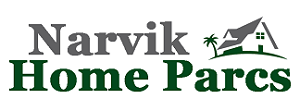A Complete Guide to Lawn Care in Seattle, WA

Key Takeaways:
- The climate in Seattle, characterized by mild, wet winters and cool summers, poses unique challenges for lawn care.
- Moss growth, diseases, and weeds are common issues faced by Seattle lawns.
- Investing in proper lawn care offers benefits such as enhanced property value and environmental advantages.
- Choosing the right grass for a Seattle lawn requires considering factors like cold tolerance, drought resistance, and low maintenance.
- Mowing at the proper height, fertilizing based on soil test results, and implementing weed control measures are crucial for lawn maintenance.
- Moss control involves improving sunlight exposure, aerating the soil, and using specific moss control products.
- Preventing lawn diseases in Seattle includes avoiding overwatering and ensuring proper airflow.
- Vigilance and proper cultural practices are important in protecting lawns from pests like grubs, cinch bugs, and armyworms.
Welcome to the complete guide to lawn care in Seattle, WA! In this comprehensive guide, we will explore the importance of lawn care in Seattle, the challenges unique to this region, how to choose the right grass for your lawn, proper lawn maintenance techniques, and solutions to Seattle-specific lawn care challenges. Whether you are a new homeowner in Seattle or have been living here for years, this guide will provide you with the knowledge and strategies you need to create a healthy and beautiful lawn.
The Importance of Lawn Care in Seattle
1.1. The Climate and Its Effects on Lawn Health
The Pacific Northwest region, including Seattle, experiences a unique climate characterized by mild, wet winters and cool summers. The abundant rainfall and moisture can have both positive and negative impacts on the health of your lawn.
The high precipitation in Seattle provides a natural source of water for your lawn, reducing the need for frequent irrigation. However, excess moisture can also lead to issues such as moss growth, disease, and weed infestations. Proper lawn care practices are crucial in managing these challenges and maintaining a vibrant and healthy lawn in Seattle.
1.2. Understanding the Unique Challenges of Seattle Lawns
Seattle lawns face several unique challenges that homeowners should be aware of. One of the most common issues is moss growth, which thrives in the cool, damp conditions of the region. Moss can quickly take over a lawn if not properly managed, blocking sunlight and nutrients from reaching the grass.
In addition to moss, Seattle lawns are susceptible to various diseases such as snow mold and fungal infections. The cool, moist climate provides an ideal environment for these diseases to thrive. Regular monitoring and prompt action are essential to prevent and treat these issues.
Weeds can also be a problem for Seattle homeowners. Common weeds in the area include dandelions, creeping buttercup, and clover. These weeds can compete with the grass for nutrients and moisture, leading to a weaker and less attractive lawn.
1.3. The Benefits of Investing in Proper Lawn Care
Investing in proper lawn care in Seattle offers numerous benefits to homeowners. A healthy and well-maintained lawn not only enhances the beauty of your property but also provides environmental and economic advantages.
A lush, green lawn acts as a natural air purifier, trapping dust and pollutants and reducing air pollution. It also helps to absorb carbon dioxide and release oxygen, contributing to a cleaner and healthier environment.
In terms of economics, a well-cared-for lawn can increase your property’s value. Curb appeal plays a significant role in attracting potential buyers, and a healthy lawn can make a strong positive impression.
Choosing the Right Grass for Your Seattle Lawn
2.1. Cold-Tolerant Grass Varieties for Seattle
When it comes to choosing grass for your Seattle lawn, cold tolerance is a crucial factor. The cool and often wet climate requires grasses that can withstand winter frost and recover quickly in the spring.
Some popular cold-tolerant grass varieties for Seattle include Kentucky bluegrass, fine fescue, and perennial ryegrass. These grasses have excellent adaptability to the region’s climate and provide a lush and attractive lawn throughout the year.
2.2. Drought-Resistant Grass Options for Water Conservation
While Seattle experiences ample rainfall, water conservation is always a priority. Choosing drought-resistant grasses can help reduce water consumption and ensure a sustainable lawn.
Tall fescue and buffalo grass are two excellent options for drought resistance. These grasses have deep root systems that enable them to access water from lower soil levels, reducing the need for frequent irrigation.
2.3. Low-Maintenance Grasses for Busy Seattle Homeowners
For homeowners with busy schedules, low-maintenance grasses can be a lifesaver. These grasses require minimal care and can still thrive in Seattle’s climate.
Zoysia grass and centipede grass are known for their low-maintenance qualities. They have slower growth rates, reducing the frequency of mowing, and require less fertilizer and water compared to other grass varieties.
Proper Lawn Maintenance Techniques
3.1. Mowing Tips and Tricks for a Healthy Lawn
Mowing is a fundamental aspect of lawn care in Seattle. Proper mowing techniques contribute to the overall health and appearance of your lawn.
It’s recommended to mow your lawn at a height of 2.5 to 3 inches. Keeping the grass slightly longer helps shade the soil, retain moisture, and discourage weed growth. Avoid cutting more than one-third of the grass height in a single mowing session to prevent stress on the plants.
Additionally, regularly sharpening your mower blades ensures clean cuts, reducing the risk of brown tips and disease. Alternate the mowing pattern each time to prevent grass from leaning in one direction, which can impact its overall health.
3.2. Fertilizing Strategies for Seattle Lawns
Fertilizing is essential to provide your lawn with the necessary nutrients for healthy growth and vitality. Understanding the nutrient requirements of your grass and the timing of fertilizer applications is vital for successful lawn care in Seattle.
It’s recommended to perform a soil test to determine the nutrient deficiencies in your lawn. This information will guide you in selecting the appropriate fertilizer and application schedule.
For most grasses in Seattle, a balanced fertilizer with nitrogen, phosphorus, and potassium is suitable. Splitting the fertilizer application into multiple sessions throughout the year ensures a steady supply of nutrients for the grass.
3.3. Weed Control Measures in the Pacific Northwest
Weed control is an ongoing task in maintaining a pristine lawn. The wet climate of the Pacific Northwest provides favorable conditions for weed growth.
Regularly inspect your lawn for weed infestations and remove them promptly. Hand-pulling is effective for small weed populations, while herbicides can be used for larger areas. Using pre-emergent herbicides in early spring can help prevent weed seeds from germinating and taking hold.
Seattle-Specific Lawn Care Challenges
4.1. Dealing with Moss Growth in Wet Seattle Climate
Moss growth is a common issue faced by homeowners in Seattle due to the damp and shady conditions. Addressing moss growth requires a multi-step approach.
The first step is to improve the conditions for grass growth by increasing sunlight exposure. Trimming overhanging branches and removing any obstacles that block light can help create a more favorable environment for grass to thrive.
Aerating the soil to improve drainage and reduce compaction is another essential step in moss control. This allows water to penetrate the soil more easily, depriving moss of the moisture it needs to grow.
Applying a moss control product specific to your lawn’s needs can also be effective in eradicating existing moss and preventing future growth. Ensure to follow the manufacturer’s instructions for the best results.
4.2. Managing Lawn Diseases Common in the Pacific Northwest
The cool and moist climate of the Pacific Northwest makes it susceptible to various lawn diseases. Snow mold and fungal infections are particularly common in Seattle lawns.
To prevent lawn diseases, it’s crucial to practice proper lawn maintenance techniques. Avoid overwatering, as excessive moisture creates favorable conditions for diseases to develop. Ensure proper airflow by regularly removing debris, thatch, and leaves from the lawn.
If you notice signs of disease, such as brown patches or unusual discoloration, it’s important to take action promptly. Consult with a lawn care professional who can accurately diagnose the problem and recommend appropriate treatment options.
4.3. Protecting Your Lawn from Common Pests in Seattle
Common pests in Seattle lawns include grubs, cinch bugs, and armyworms. These pests can cause significant damage to your lawn if left unchecked.
Vigilance is essential in identifying pest infestations early on. Regularly inspect your lawn for signs of damage, such as brown patches, thinning grass, or irregular feeding patterns. If you suspect a pest problem, consult with a pest control expert to determine the appropriate course of action.
Implementing proper cultural practices, such as appropriate watering and mowing, can also help reduce pest infestations. Healthy and well-maintained lawns are more resilient to pests and can better withstand any potential damage.
Congratulations! You’ve now learned everything you need to know about lawn care in Seattle, WA. By incorporating these tips and strategies into your lawn care routine, you can create and maintain a beautiful and healthy lawn that will be the envy of your neighbors. Remember, consistent and proactive care is the key to a vibrant and thriving lawn in the unique climate of Seattle.

